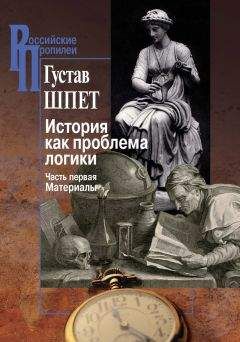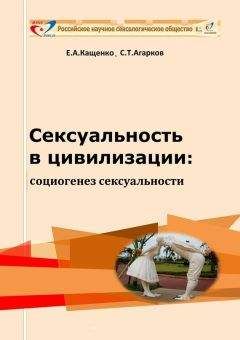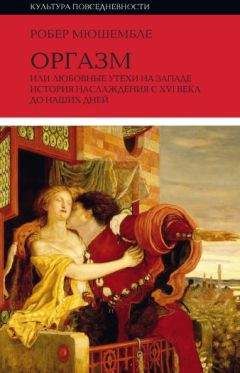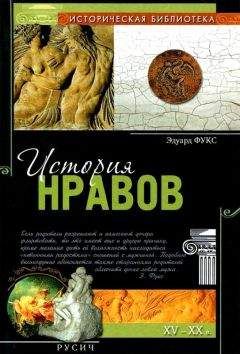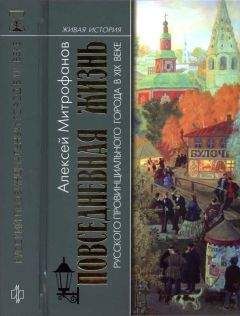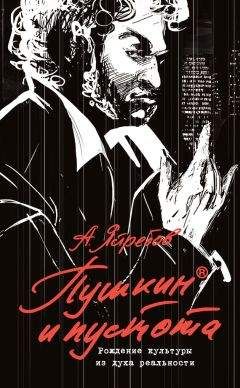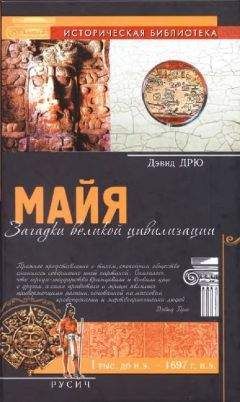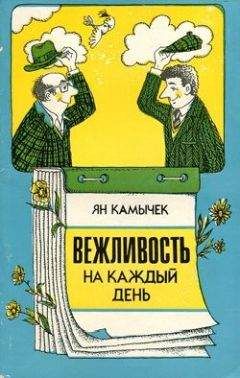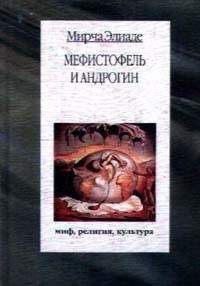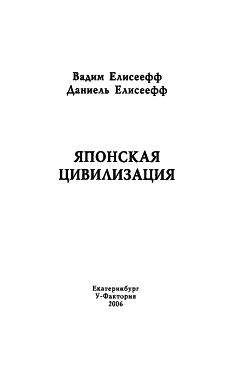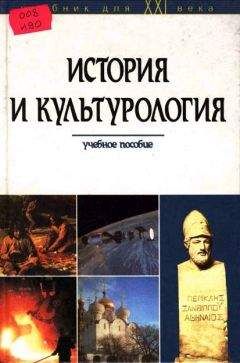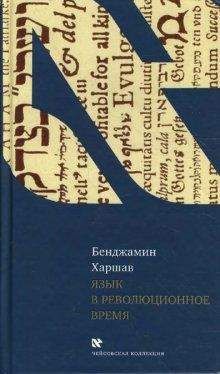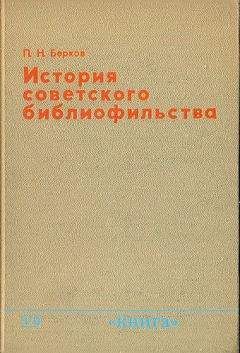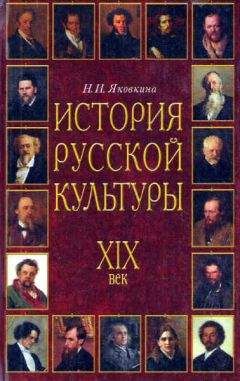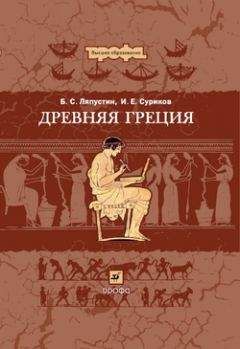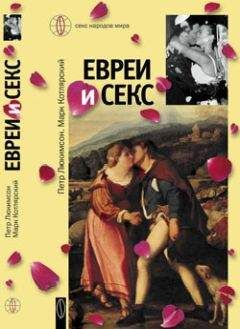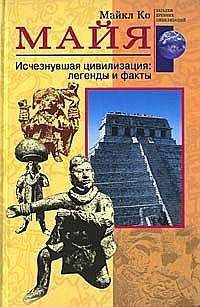Дэвид Фридман - Пенис. История взлетов и падений
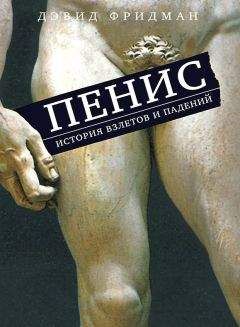
Скачивание начинается... Если скачивание не началось автоматически, пожалуйста нажмите на эту ссылку.
Жалоба
Напишите нам, и мы в срочном порядке примем меры.
Описание книги "Пенис. История взлетов и падений"
Описание и краткое содержание "Пенис. История взлетов и падений" читать бесплатно онлайн.
Культурологический бестселлер американского журналиста Дэвида Фридмана «Пенис: история взлетов и падений» исследует влияние «главного» мужского органа на развитие западной цивилизации и всего человечества. Автор блестяще микширует богатый исторический материал, остросюжетные линии, психологические откровения, интимные подробности, научные факты и остроумные комментарии, адресуя их в равной степени и мужчинам, и женщинам. Не скатываясь ни в порнографию, ни в пуританство, балансируя на грани физиологического триллера и эротического ребуса, книга подталкивает к ответу на главный в жизни каждого мужчины вопрос: «Кто кем управляет — я им или он мной?»
Миллионы читателей уже ответили на него благодаря стараниям Дэвида Фридмана, но каждый день он возникает заново и провоцирует новые варианты ответов.
C. 50. «Волшебная сила»: George Ryley Scott, Phallic Worship (London: Senate, 1996), p. 16.
C. 50. О Приапе: Richlin, The Garden of Priapus; Richard Payne Knight, A Discourse on The Worship of Priapus (London; Privately Printed, 1865); James Wyly, The Phallic Quest (Toronto: Inner City Books, 1989); Scott, Phallic Worship; Peter Stewart, «Fine Art and Coarse Art: The Image of Roman Priapus», Art History 20, (1997): 575–88; Eugene Michael O'Connor, Symbolum Salacitatis (New York: Lang, 1989); W. H. Parker, Priapea: Poems for a Phallic God (London: Croom Helm, 1988); H. D. Rankin, «Petronius, Priapus and Priapeum LXVIII», Classica et Mediaevalia 27 (1966): 225–42; Craig Williams, Roman Homosexuality (New York: Oxford University Press. 1999); Ilias Papadopoulos and Alpay Kelami. «Priapus and Priapism», Urology 32 (1988): 385–86; Sissa and Detienne.The Daily Life of the Greek Gods.
C. 53. «Император Коммод сделал»: Adams, The Latin Sexual Vocabulary. p. 9–12, 78.
C. 54. «Когда услышишь, Флакк»: Toner, Leisure and Ancient Rome, p.58.
C. 55. «Голая правда заключалась»: John Clarke, «Hypersexual Black Men in Augustan Baths», Sexuality in Ancienmt Art, p. 184–98.
C. 55. «Пенис символизировал силу»; Kellum, The Phallus as Signifier. Sexuality in Ancient Art, p. 173.
C. 56. «И все же римляне»: Eros in Pompeii. Johns, Sex or Symbol.
C. 58. «Затем жрецы-неофиты»; Maarten J. Vermaseren, Cybele and Attis (London: Thames & Hudson, 1997); Lynn E. Roller. In Search of God the Mother (Berkley, Cal.:University of California Press. 1999); Walter Stevenson, «The Rise of Eunuchs in Greco-Roman Antiquity». Journal of the History of Sexuality 5(1995); 485–511.
C. 58. «Если у тебя есть евнух»: Цитируется по Сагу Taylor. Castration (New York: Routledge, 2001), p. 140.
C. 59. «Женщин иных прельщают»; Juvenale, Saturae 6366—75, in Victor T. Cheney, A Brief History of Castration (Edison, N. J: American Focus, 1996), p. 6–7.
C. 60. «Нерон, как писал Светоний»: Gaius Suetonius Tranquillus, The Twelve Caesars, trans., Robert Graves (London; The Folio Society, 1964), p. 224–25.
C. 60. Дополнительные источники о евнухах и кастрации: Taylor, Castration; Theodore James, «Eunuchs and Eunuchism — An Historical Discourse», Parts 1.ind 11, Adler Museum Journal of the American Medical Association 212 (1970); 97–100; Tanna, Sex in History; Denning, The Mythology of Sex.
C. 61. «В «Золотой ветви»: Цит. по Kit Schwartz. The Male Member (New York St. Martins Press, 1985), p. 94–95.
С. 62. «Так, в 1938 году»: Edith Weigere-Vowinkel, «The Cult and Mythology of the Magna Mater from the Standpoint of Psychoanalysis», Psychiatry 3 (1938): p. 347–378
C. 62. «Ha Карла Юнга это деяние»: Eugene Monick, Castration and Male Rage (Toronto: Inner City Books, 1991), p. 8.
C. 64. «Римляне даже праздновали»: Peter Brown, The Body and Society, Elaine Pagels, Adam, Eve, and the Serpent (New York: Vinuge, 1989): Uta Ranke-Heincmann, Eunuchs for the Kingdom of Heaven (New York: Penguin, 1991); Aline Russelle, Porneia (Cambridge: Blackwell, 1993); Daniel F. Caner, «The Practice and Prohibition of Self-Castration in Early Christianity», Virgilia Christianae 51 (1997); 396–415.
C. 65. «Иисус не предпочел бы родиться»: Ranke-Heinemann, Eunuchs for the Kingdom of Heaven, p. 5.
C. 66. «Как отмечает профессор»: Taylor, Castration, p. 15.
C. 66. Ibid., p. 142.
C. 69. «О ключе бездны»: Laura Engelstein, Castration and the Heavenly Kingdom, p. 13.
C. 70. «Истинный евнух не тот»: Clement of Alexandria. Paidogogus III, 4,26.
C. 70. Об Августине и его дебатах; Brown, The Body and Society; Pagels, Adam, Eve and the Serpent.
C. 73. «Это наказание за первородный грех»: Pagels, Adam, Eve and the Serpent, p. 111.
C. 75. «Господь создал тело»; Ibid.,p. 132.
С. 77. «В английском языке»; (New-York; Anchor, 1959); р. 23.
С. 77. «После победы идеологии»: Michael Camille, The Gothic Idol (New York: Anchor, 1959), p. 92.
C. 78. «Их тела [то есть Адама и Евы)»: Цит. по Leo Steinberg, The Sexuality of Christ in Renaissance Art.ind in Modern Oblivion, second edition (Chicago: University of Chicago Press, 1996), p, 249.
C. 78. «Подобное отрицание тела»: Camille, The Gothic Idol, p. 94.
C. 79. О пенитенциалиях; James A. Briindage, L.iw, Sex and Christian Society in Medieval Europe (Chicаgo University of Chicago Press. 1990): Vern L. Buffalo: Prometheus, 1982); Pierre Payer, Sex and the Penitentials (Toronto: University of Toronto Press, 1984).
C. 80. «Всякий, кто осквернит»: Brundage, Law, Sex and Christian Society in Medieval Europe, p. 167.
C. 80. «Ни одно из естественных плотских удовольствий»: Ranke-Heinemann. Eunuchs for the Kingdom of Heaven, p. 169.
С. 81. Об Абеляре и Элоиэе: Peter Abelard, Hisioria calamitatum, Betty Radice (London: Folio Society, 1997); M. T. Clanchy, Abelard: A Medieval Life (Oxford: Blackwell, 1998); Leif Crane, Peter Abelard (New York: Harcourt, Bruce World, 1970); Betty Radice, The Letters of Abelard and Heloise (New York: Penguin, 1974); J. T. Mucklow, The Story of Abelard’s Adversities (Toronto: Pontifical Institute of Mediaeval Studies, l992),Tannahill, Sex in History.
C. 83. «Да, заявлял теолог Пьер де ля Палюд»: Brundage, Law, Sex and Christian Society in Medieval Europe, p. 456.
C. 84. «Стоит ли удивляться»: Danielle Jacquan and Claude Thomasset. Sexuality and Medicine in the Middle Ages (Princeton, N.J.: Princeton University Press, 1988), p. 171.
C. 84. О процедурах обследования: Thomas G. Benedek and Janet Kubinec. «The Evaluation of Impotence by Sexual Congress and Alternatives Thereto in Divorce Proceedings», Transactions and Studies of the College of Physicians of Philadelphia 4 (1982): 1333–53; Jacquart and Thomasset, Sexuality and Medicine in the Middle Ages, p. 169–73; Brundage, Law, Sex and Christian Society in Medieval Europe, p. 457.
C. 85. О Константине Африкане: Monica Н. Green, «Constantinus Africanus and the Conflict between Relegion and Science», The Human Embryo, ed., G. R. Dunstan (Exeter, U. K.: University of Exeter Press, 1990), p. 47–69; Joan Cadden, Meanings of Sex Difference in the Middle Ages (New York: Cambridge University Press, 1995); Jacquart and Thomasset, Sexuality and Medicine in the Middle Ages.
C. 87. Константин Африкан и Чосер: M.Bassan, «Chaucer's Accursed Monk, Constantinus Africanus», Medieval Studies 24 (1962): 1127–40; Paul Delany, «Constantinus Africanus and Chaucer’s Merchant’s Tale», Philological Quarterly 46 (1967); 560–66.
C. 87. «Кто испытывает больше»: Mary Frances Wack, «The Measure of Pleasure: Peter of Spain on Men, Women, and Lovesickness», Viator 17 (1986); 174–96; L. M. De Rijk, «The Life of Peter of Spain (Pope John XXI)». Vivarium 8 (1970): 123–153.
C. 88. «Собаки любят запахи»: Цит. по Ranke-Heinemann, Eunuchs for the Kingdom of Heaven, p. 182.
C. 94. О крайней плоти Иисуса: Marc Shell, — The Holy Foreskin; or Money, Relics, and Judeo-Christianity, Jews and Other Differences. Eds., Jonathan and Daniel Boyarin (Minneapolis: University of Minnesota Press, 1997), p. 345–359; Felix Bryk, Circumcision in Man and Woman (New York: American Ethnological Press, 1934); Lee Alexander Stone, The Power of a Symbol (Chicago: Pascal Covici, 1925).
Глава втораяС. 99. О тайной карьере Леонардо на поприще анатомии писали многие: Kenneth D. Keele, Charles D. O’Malley and J. B. de C. M. Saunders. J. Playfair McMurrich, Antonina Valentin, Edward McCurdy, Sherwin B. Nuland, Sander L. Gilman, Stanley). Pacion, Sigmund Freud, John Hermann Randall Jr, Elmer Belt, H. Hopstock, Charles Singer, Henri Zerner.
C. 100. «И вот, наконец, в 1503 году»: O’Malley and Saunders, Leonardo da Vinci on the Human Body (New York: Greenwich House, 1982), p. 22.
C. 100. «Я уничтожил все органы»: Kenneth D. Keele, Leonardo da Vinci’s Elements of the Science of Man (New York: Academic Press, 1983), p. 197.
C. 101. «Женщинам нравится, чтобы»: Ibid, p. 350–354.
C. 103. «B 1585 году Амбруаэ Паре»: Rainer М. Engel et al.. Impotence: A Historic Review, a pamphlet published by AUA, Baltimore.
C. 105. «Часто мужчина спит»: Gilman, Sexuality: An Illustrated History (New York: John Wiley&Sons, 1989), p. 94.
C. 112. «Хантер не ожидал найти там»: Sherwin В. Nuland, Leonardo da Vinci (New York: Lipper/Viking, 2000), p. 120.
C. 113. «Неправ тот, кто»: Keele, Leonardo da Vinci’s Elements of the Science of Man, p. 350.
C. 113. О Везалии писали: Charles D. O’Malley, L. R. Lind, Charles Singer, F. J. Colem Meyer Friedman and Gerald W. Friedland, Frank N. Magill, Charles Coulston Gillispie, Daniel J. Boorstin, J. B. de C. M. Saunders and Charles D. O’Malley. Об истории анатомии можно прочесть у Bernard Knight, Jonathan Sawday, Giovanni Ferrari. Jan C. Rupp, Mary Niven Alston.
C. 114. «Яички состоят»: George W. Corner, Anatomical Text of Earlier Middle Ages (Washington D.C.: Carnegi Institution, 1927), p. 63–64.
C. 116. «Везалий продемонстрировал им»: Baldasar Heseler, Andreas Vesalius’, First Public Anatomy in Bologna, 1540 (Upsala; Sweden; Almqvist&Wiksells, 1959), p. 227–228.
C. 117. «В отношении пениса истина»: The epitome of Andreas Vesalius, transl., L R. Lind (New York; M.icmillan, 1949), p. 83–85.
C. 117. Рисунок вагины и пениса, сделанный Везалием, фигурирует в следующем издании; Saunders and O'Malley, The Illustrations from the Works of Andreas Vesalius, p, 171.
С. 120. О Марии, у которой «появился мужской жезл»: Ambroise Раге, On Monsters and Marvels (Chicago: University of Chicago Press, 1982), p. 31–32. О визите Монтеня: Stephen Gieenblatt, Shakespearean Negotiations (Berkley, Cal.; University of California Press, 1988), p.81.
C. 122. «Как фасция Бака, куперова железа»: Knight, Discovering the Human Body, p. 134.
C. 123. «По мнению Фаллопио, это позволяло»: Pinto-Correia, The Ovary of Eve, p. 86.
C. 123. «Если пенис при его анатомическом исследовании»: Boorstin, The Discoverers, р. 348.
С. 125. «Пенис следует готовить таким образом»: RegnierdeGraaf, а Treatise Concerning The Generative Organs of Men, in H. D. Jocelyn and B. P Setchell, «Regnier de Graaf on the Human Reproductive Organs», Journal of Reproduction and Fertility, suppl. 17. (1972): 47.
C. 125. «Иногда мы проводили»; Ibid., p. 47–48.
C. 126. Другие медицинские открытия де Граафа описаны в следующих работах: В. R Setchell, «The Contributions of Regnier de Graaf to Reproductive Biology», European Journal of Gynecology and Reproduction Biology 4 (1974); 1–13; Hubert R. Catchpole, «Regnier de Graaf», 1641–1673, Bulletin of the History of Medicine 8 (1940): 1261–89; Ruth J. Mann, «Regnier de Graaf>, 1641–1673, Investigator, Fenility and Sterility 27 (1976): 466–468.
C. 129. Левенгук цитируется по Edward G. Rcustow, «Images and Ideas: Leeuwenhoek’s Perception of the Spermatozoa», Journal of the History of Biology 16(1983): 185–224.
C. 130. Другие источники о Левенгуке и Спалланцани: Carlo Castellani. Spermatozoan Biology from Leeuwenhoek to Spallanzani. Journal of the History of Biology 4 (1971): 221–44; Pinto-Correia. The Ovary of Eve; F.Cole. Early Theories of Sexual Generation (London: Oxford University Press. 1930); Joseph Needham. A History of Investigations into Generation: 1651–1828 (Baltimore: John Hopkins University. 1966).
C. 135. «Пусть сперма мужчины перегниет»: Pinto-Correia, The Ovary of Eve, p. 22.
C. 136. «Шумеры считали, что»: Jacquart and Thomasset, Sexuality and Medicine in the Middle Ages, p. 53; Giulia Sissa, «Subtle Bodies-, Fragments of a History of the Human Body, Part Three, ed., Michael Feher with Ramona Naddaff and Nadia Tizi (New York: Zone, 1989), p. 132–57; Francoise Heritier-Auge. «Semen and Blood: Some Ancient Theories Concerning Their Genesis and Relationship», Fragments for a History of the Human Body, Part Three, p. 158–175.
C. 137. «Эти вымышленные наблюдения «гомункулов»": Pinto-Correia, The Ovary of Eve, p. 101, 212,231.
C. 141. O кастратах писали: J. S. Jenkins, Meyer M. Melicow and Stanford Pulrang, Angus Heriot, John Rosselli, Brian E Setchell.
C. 147. О фобии, связанной с мастурбацией: Robert Н. MacDonald, Е. Н. Hare, Ludmilla Jordanova, Н. Tristram Engelhardt Jr, Rene A. Spitz, Peter L. Allen.
C. 148. Об энциклопедистах Руссо и Дидро: Vernon А Rosario II, «Phantastical Pollutions», Solitary Pleasures, eds., Paula Bennet and Vernon A. Rosario II (New York: Routledge, 1995) p. 13–43.
C. 152. «Как писал Шопар»: Rosario, The Erotic Imagination, p. 31.
C. 152. «Галиан оставил после себя»: Richard D. Kenney, «Adolescent Males Who Insert Genitourinary Foreign Bodies». Urology 32 (1988)» 127–129.
C. 153. О мании мастурбации в Америке: G. J. Barker-Benfield, «The Spermatic Economy», Feminist Studies I (1972): 45–74; John S. Haller Jr., Robin M. Haller, The Physician and Sexuality in Victorian America (Urbana, III.: University of Illinois Press, 1974); John D. Emilio and Estelle B. Freedman, Intimate Matters (New York: Harper&Row, 1988).
C. 154. «Что-то случилось?»: Цит. по Haller and Haller, The Physician and Sexuality in Victorian America, p. 219–220.
C. 155. Об обрезании как средстве борьбы с мастурбацией: David L. Gollaher «From Ritual to Science», Journal of Social History 28 (1994): 5–36,
C. 158. О медицинском журнале доктора Боствика: Christopher Looby, «The Roots of the Orchis, the lull of Chestnuts: The Odor of Male Solitude», in Bennet and Rosario, Solitary Pleasures, p. 212–220.
Подписывайтесь на наши страницы в социальных сетях.
Будьте в курсе последних книжных новинок, комментируйте, обсуждайте. Мы ждём Вас!
Похожие книги на "Пенис. История взлетов и падений"
Книги похожие на "Пенис. История взлетов и падений" читать онлайн или скачать бесплатно полные версии.
Мы рекомендуем Вам зарегистрироваться либо войти на сайт под своим именем.
Отзывы о "Дэвид Фридман - Пенис. История взлетов и падений"
Отзывы читателей о книге "Пенис. История взлетов и падений", комментарии и мнения людей о произведении.





